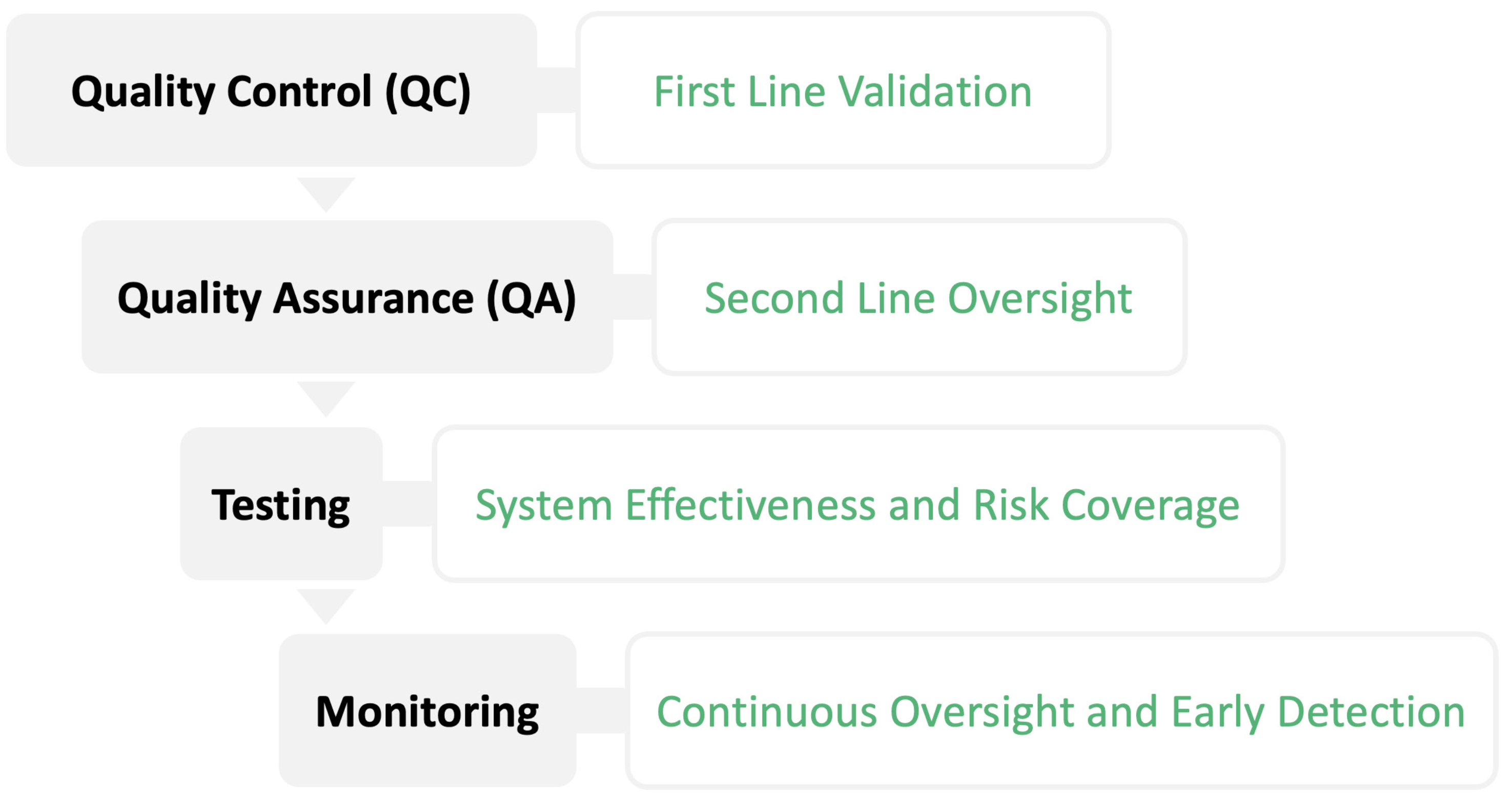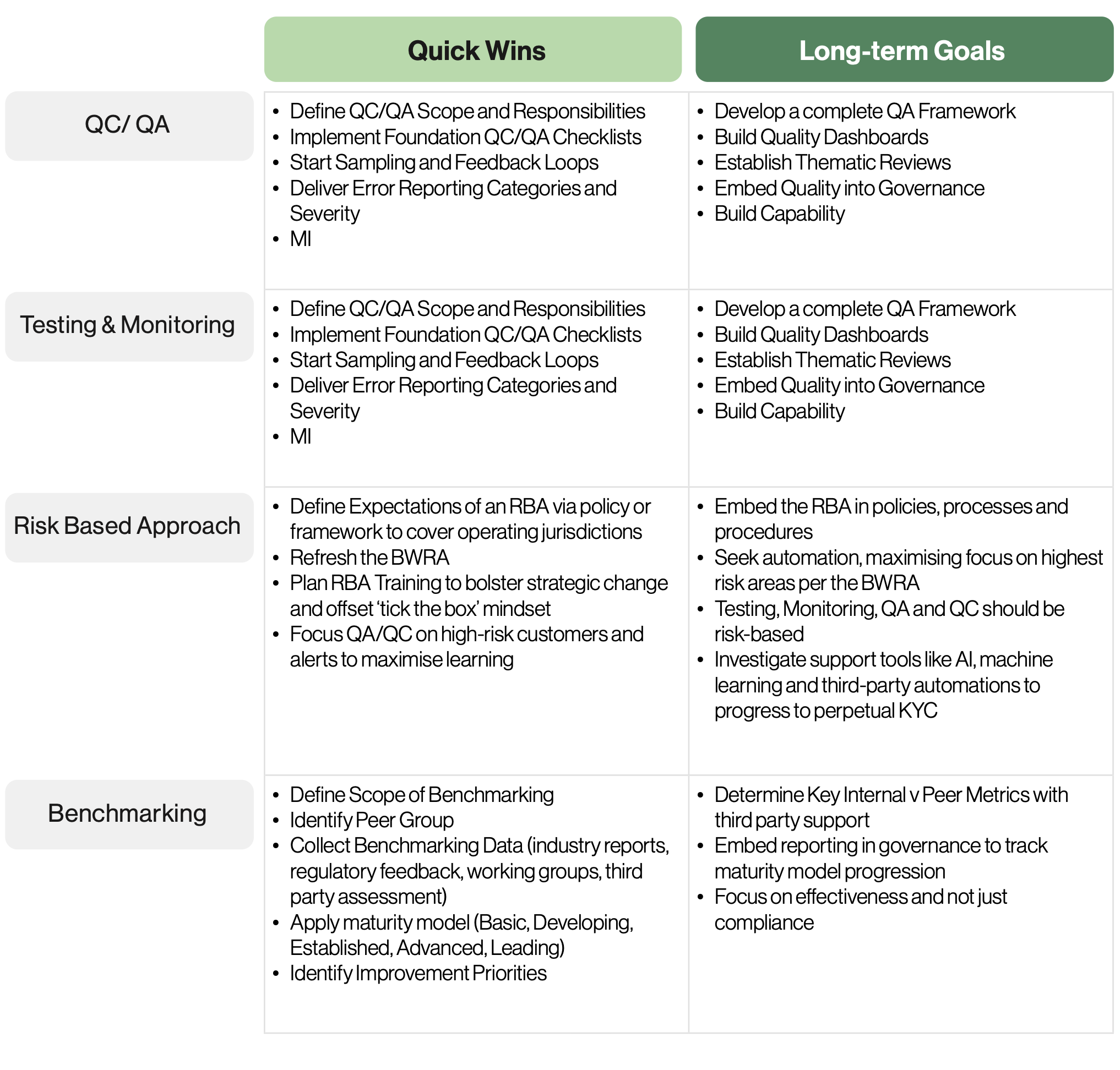Insight

A lot of our customers ask DCM to help enhance and maintain maturity of their Quality Assurance, Quality Control or Testing & Monitoring functions. This usually involves developing robust protocols and detailing how risk-based approaches might differ across markets. Our customers also seek insight into how they might benchmark against the industry to develop a best in class, well established and adequately resourced financial crime function.
QA = Quality Assurance
QC = Quality Control
A robust Financial Crime QA (Quality Assurance) function should ensure that controls, processes and investigations are effective, accurate and compliant.
This differs to QC (Quality Control), which should perform near real-time checks on operational work to ensure adherence to procedure and completeness.
QA is focused on assessing processes and driving continuous improvement after the fact, while QC focuses on verifying individual output at the point of execution.
Testing & Monitoring is critical to ensure accuracy of system logic, thresholds, workflows and data inputs to ensure effective ongoing management of financial crime risk. A good testing & monitoring regime will prevent system degradation.
As a reminder: Testing ensures system accuracy and effectiveness. Monitoring tracks system health and performance.
A fully mature financial crime function is successful in the proactive prevention, detection and reporting of financial crime risks. It is a compliant, sophisticated collection of controls which are risk-based, data driven and continuously improving thanks to robust testing and monitoring processes, as well as QC and QA. Responsibility, accountability and oversight are spread across functions, reducing inherent bias in validation:

Testing, monitoring, oversight and validation activities need to embed into change and governance across multiple levels of the organisation to facilitate long term improvements. At DCM, we’ve seen that good Assurance regimes have the same strong core governance. Clients who lead in this space make heavy use of accessible dashboards and consistent MI reporting. Analysis from testing and monitoring forms part of risk committee considerations and changes are derived from, or backed up by, data insights. Longer term, automating outcomes from these processes into dashboards and MI for centralised reporting ensures sustainability, and prevents controls effectiveness checking from dropping off the radar.
Important: In the short term, resource might be dedicated to creating dashboards, developing control tests and standing up QC/QA procedures and workflows.

DCM has extensive experience implementing robust testing and monitoring, QA and QC processes in BAU as well as remediation programmes. Thanks to our history of supporting different businesses in the financial industry, we can help you benchmark expectations against peers and establish top-notch testing and monitoring functions.
At DCM, we often engage with firms at the infancy of their journey as they progress toward a more mature financial crime function. We can support firms in outlining short and long-term plans to build a sustainable, robust system which will scale.
We benefit from clear insight about regulatory expectations too, with a former approved FCA Skilled Person leading our team who is on hand to support projects definition and execution with clear milestones and delivery objectives.
For more information on all our services please get in touch here.